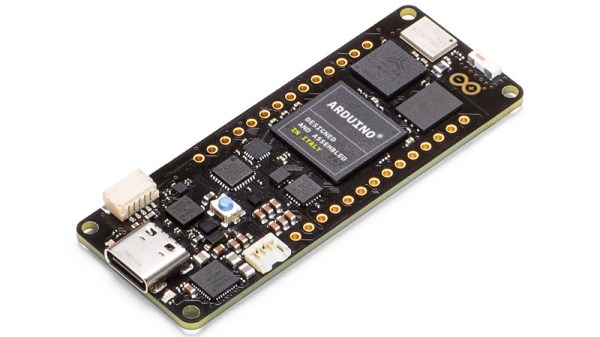Remember IRDA? Before we had Bluetooth and WiFi, the cool kids connected their computers and printers together over fancy Infrared connections. Yes, your computer probably still has the drivers, but the hardware is nowhere to be found. For good reason, too: we now have Bluetooth and WiFi. This year, at CES, IRDA is making a comeback. MyLiFi is a product from OLEDCOMM that puts infrared connectivity in a lamp. All you need to do is plug an Ethernet cable into a desk lamp, a proprietary dongle into your computer, and you too can reap the benefits of a wireless connection with a range measured in meters. One of the selling points of this product is that this gives you wireless Internet ‘without radio waves’, marketing to the idiots who think RF causes cancer or whatever. It’s a stupid product that’s a highlight of the entire trade show.
During this year’s CES, Intel tweeted, “With each person on earth soon to be producing ~1.5 GB of #data each day, it is a resource without limits“. Two criticisms: First, ‘Earth’ should be capitalized. Second, data mined from individuals — which includes personal data and metadata including where you were, and who you talked to — is a resource to be extracted by capitalism. Welcome to the post-privacy society, brought to you by #CES2018.
Oh, crap, we’re getting into cryptocurrency…
Kodak has announced their own blockchain. Is Kodak going to the moon? Yes, but hold on: this might be a good idea. Kodak wants to use a blockchain for ‘image rights management’, where photographers can register, archive, and license their work. It’s a blockchain, and also a solution to a problem: something you don’t see much of these days. Shares of KODK shot up from $3.15 on Monday to somewhere north of $10 this week. Is it a good idea? Who knows, but someone put the word ‘blockchain’ in a press release and made a buttload of cash.
The guy behind the Maker Movement wants to create a blockchain platform for Makers. Who’s this guy behind the Maker Movement? Mark Hatch, former CEO of TechShop and someone who is purportedly on the board of Maker Media (Oh, that’s how Make got the scoop on the TechShop closure -ED). He’s creating a Blockchain for Makers. This blockchain will take two forms. The first is to allow ‘easy confirmation of skills’? Is little Bobby certified to use the table saw? Check the Blockchain. The second barb in our paw is a ‘currency token’ that provides an easy way to pay for related goods or services. There’s no mention if these services are makerspace dues, or some sort of payment system where creators can collect money from people who really really want Raspberry Pis stuffed into 3D printed Nintendos.
In drone news, I am reporting there are no fixed-wing drones on display at CES. Last year, Underwater ROVs outnumbered autonomous fixed-wing aircraft, and this year the scales tipped even further towards submersibles. The laws of physics don’t change for 1/10th scale aircraft, and fixed-wing drones will be more efficient than their multicopter counterparts at nearly every task.
We all know (or should) that safes in Las Vegas hotel rooms aren’t secure. CES 2018 has finally innovated on the hotel safe and come up with something you really don’t want to put your money, wallet, or passport in. It’s an Internet of Things safe. What are the features? Well, it’s small and lightweight and provides little in the way to mount anything. That’s great if you just want to steal the entire safe. But what about breaking into the safe? Don’t worry, the entire thing is made out of plastic. A quick whack to the top of the safe will open it right up.














